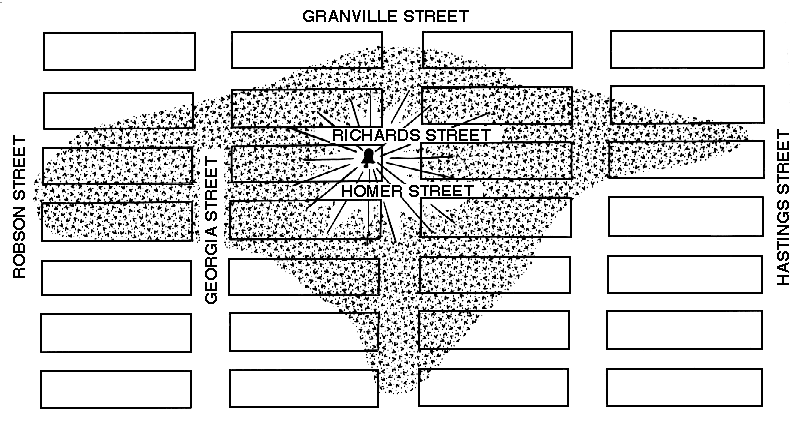
 |
Acoustic Space |
The perceived area encompassed by a soundscape, either an actual environment, or an imagined one such as produced with a tape recording and several loudspeakers. Every sound brings with it information about the space in which it occurs (for environmental sound) or is thought to occur (as with synthesized sound). With environmental sound, loudness and the quality of reverberation mainly determine the kind of space that is perceived, enclosed or open, large or small (see diffuse sound field, free field). The sense of speeding motion is usually perceived by the presence of a Doppler effect.
See: Azimuth, Binaural Hearing, Projicience, Stereoacusis. See also: Binaural Recording, Diffusion, Kunstkopf, Quadraphonic, Sound Effect, Stereophonic.
A hi-fi environment, in which all sounds may be heard clearly, is characterized by a well defined sense of acoustic space in that all sounds may be perceived as occurring in the direction and at the distance where they originate. In such an environment, one can easily orient oneself with respect to these sounds. On the other hand, in a lo-fi environment, sounds are crowded together, obliterating all sense of unique space, and creating a claustrophobic effect on the individual. Compare: Signal-to-Noise Ratio.
Acoustic space may also refer to the profile of a sound or sound signal over its surrounding environment. The acoustic space of any sound is that area over which it may be heard before it drops below the level of ambient noise. The diagram below shows the area over which the bells of the Holy Rosary Cathedral in Vancouver may be heard, a profile greatly diminished from the early 20th century when they could be heard for several miles.
Compare the Acoustic Horizon and Isobel maps. See: Sonography.

Sound Profile Map of the Holy Rosary Bells, Vancouver, made June 16, 1973, during the ringing of the "Eight-Splice Surprise Major" peal (from The Vancouver Soundscape, No. 2, Music of the Environment series, World Soundscape Project 1974).